► New coupe-style crossover
► Hybrid or mild hybrid
► Rival for Toyota C-HR
This is Renault’s newest crossover – currently the biggest it offers in the UK – and as a coupe-styled SUV it’s a direct rival for the huge-selling Toyota C-HR, as well as other style-led models like the Mazda CX-30 and Citroen C4.
Like that audaciously styled Euro-centric Toyota, the Renault is hybrid only, and front-drive only. The first coupe-SUV from Renault, it arrives in the UK in late August, priced from £25,300 (£1590 less than the entry C-HR), aiming to offer a mix of style, practicality and refinement in a value-for-money package.
What are my options?
There are two powertrains and three trim levels. The E-Tech 145, is a full (non-plug-in) hybrid, and Renault expects it to be the big seller. Renault’s E-Tech hybrid system – as already seen on the Clio, Captur and Megane – uses energy-recovery know-how from the Renault (now Alpine) F1 team. The aim is seamless transition between electric, hybrid and petrol.
A battery sits under the rear seats and powers an electric motor that’s attached to the 1.6-litre petrol engine up front, supplemented by a starter-generator, much as you get in a mild hybrid. Between them they muster a total of 140bhp, with 109lb ft of torque from the engine and up to 184lb ft from the e-motor. It starts up in EV mode.
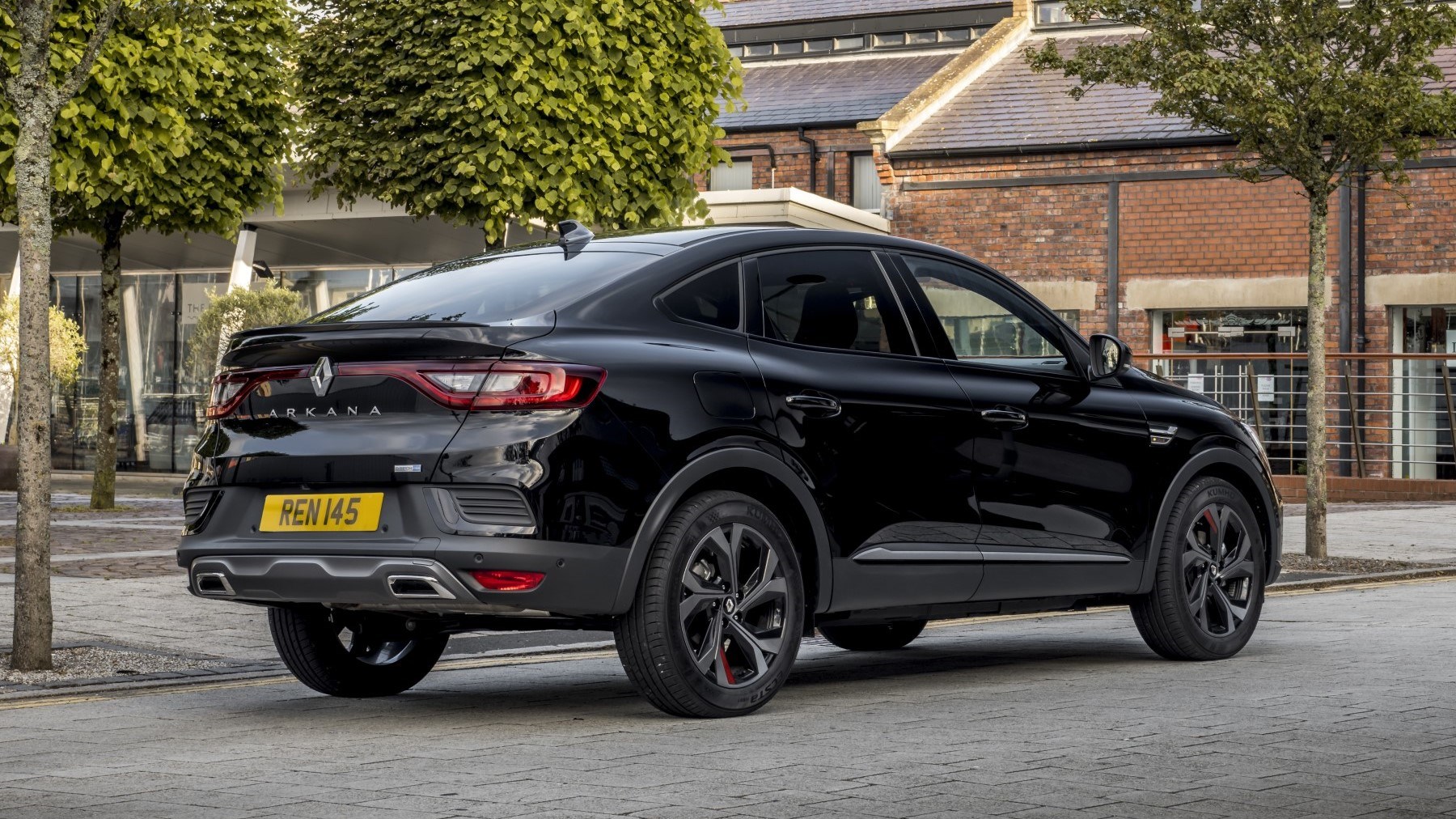
The E-Tech’s complicated automatic transmission system doesn’t have a manual shift option, but nor is it a CVT, in case you were worried. It just gets on with delivering power to the front wheels without drawing attention to itself or requiring any driver input.
The other version, the TCe 140 mild hybrid, has only a small extra battery under the front seats, which can store surplus energy directed to it by the 12-volt starter-generator attached to the 1.3-litre petrol engine. It can’t drive on electric power only; rather, it’s there to help the petrol engine and give smooth stop-start operation. It’s the lighter and quicker of the two cars: 138bhp, 192lb ft, 9.8sec to 62mph and a top speed of 127mph. But it’s also less economical (48.7mpg), and its CO2 emissions are higher (131g/km). It has a seven-speed dual-clutch transmission.
The electrical assistance is imperceptible, and for all practical purposes the TCe 140 feels like a regular automatic petrol to drive. It’s reasonably refined around town and the gearbox behaves itself, but ask for any decent chunk of performance and you’ll find the transmission recalcitrant and the engine thrashy. Best save the Arkana for unchallenging driving, then – despite the sporty looks, no model is particularly fun to drive.
There are three spec levels, all available with either powertrain: Iconic, S Edition and RS Line.
Does the shape compromise practicality?
Although C-HR buyers are clearly the primary target, the inspiration for the design came from something much bigger and more expensive: the BMW X6. A divisive look, but it’s been very influential, inspiring high-riding, hunchbacked imitators including Mercedes, not to mention some other BMWs. Now, with the Arkana, Renault aims to bring the look at a more affordable price.
The shape isn’t just about the looks. Renault says that aerodynamically the Arkana is about 25% more efficient than a traditional SUV, which helps with economy and refinement.
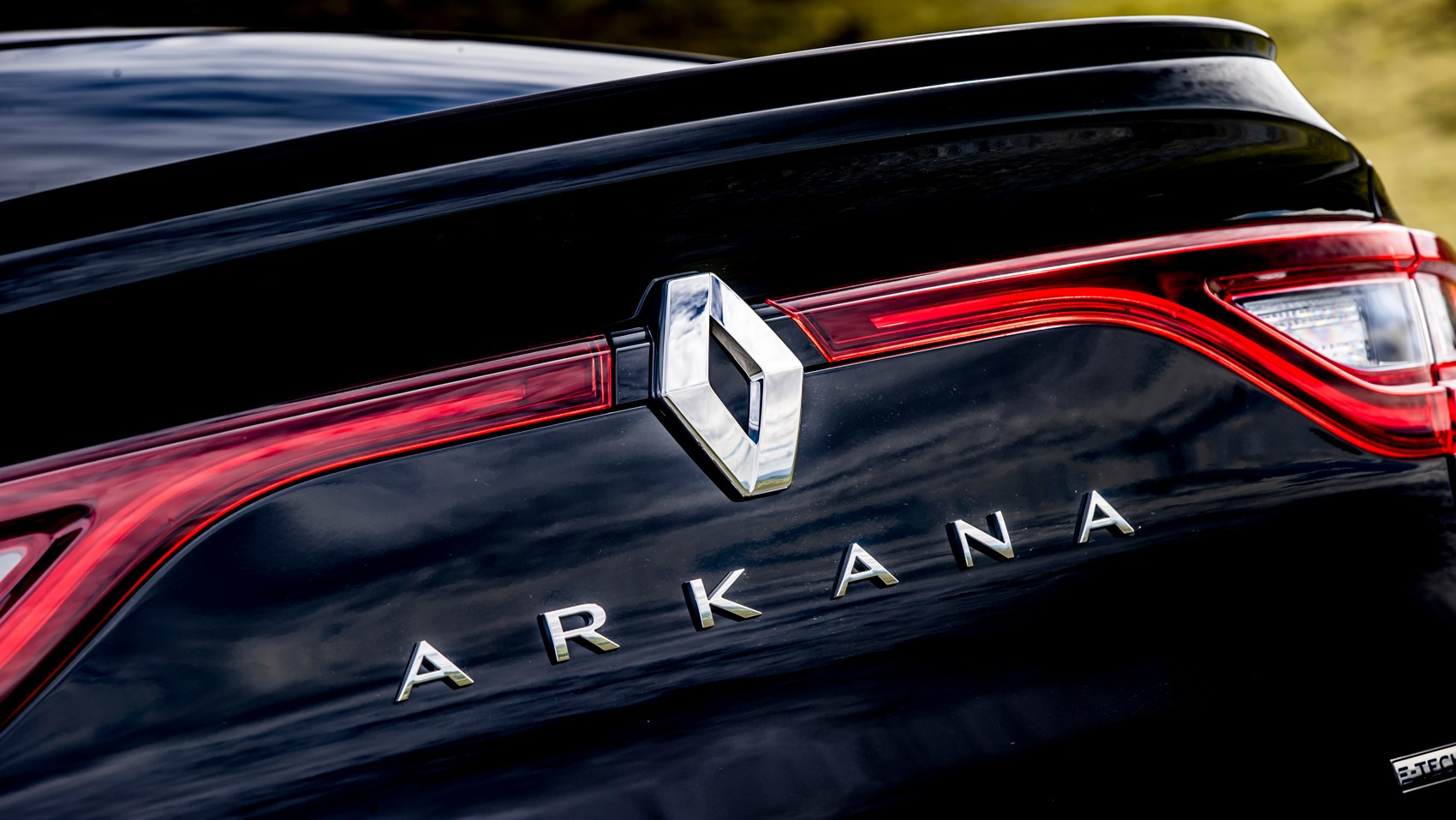
It’s a tricky balancing act: a style-led car, but also very much a family car, so it needs to look more coupe-like from the outside than it feels from the inside. And it does. The curve of the roof hasn’t resulted in tiny windows for the rear passengers, unlike the C-HR, which can feel gloomy in the back.
The shape of the body gives rear passengers slightly more width than those in the front. There are three seats in the back, although a full-grown adult wouldn’t enjoy being the sandwich filling for long; better to treat it as a four-seater, and use the wide, comfortable central armrest in the back. Rear legroom is adequate, and headroom will only be an issue for over-six-footers.
The rear seat splits 60:40, and folds flat to increase boot size from a decent 480 litres for the E-Tech hybrid (513 for the TCe mild hybrid) to a handy 1263 (1296), although the angle of the hatch will rule out boxier loads.
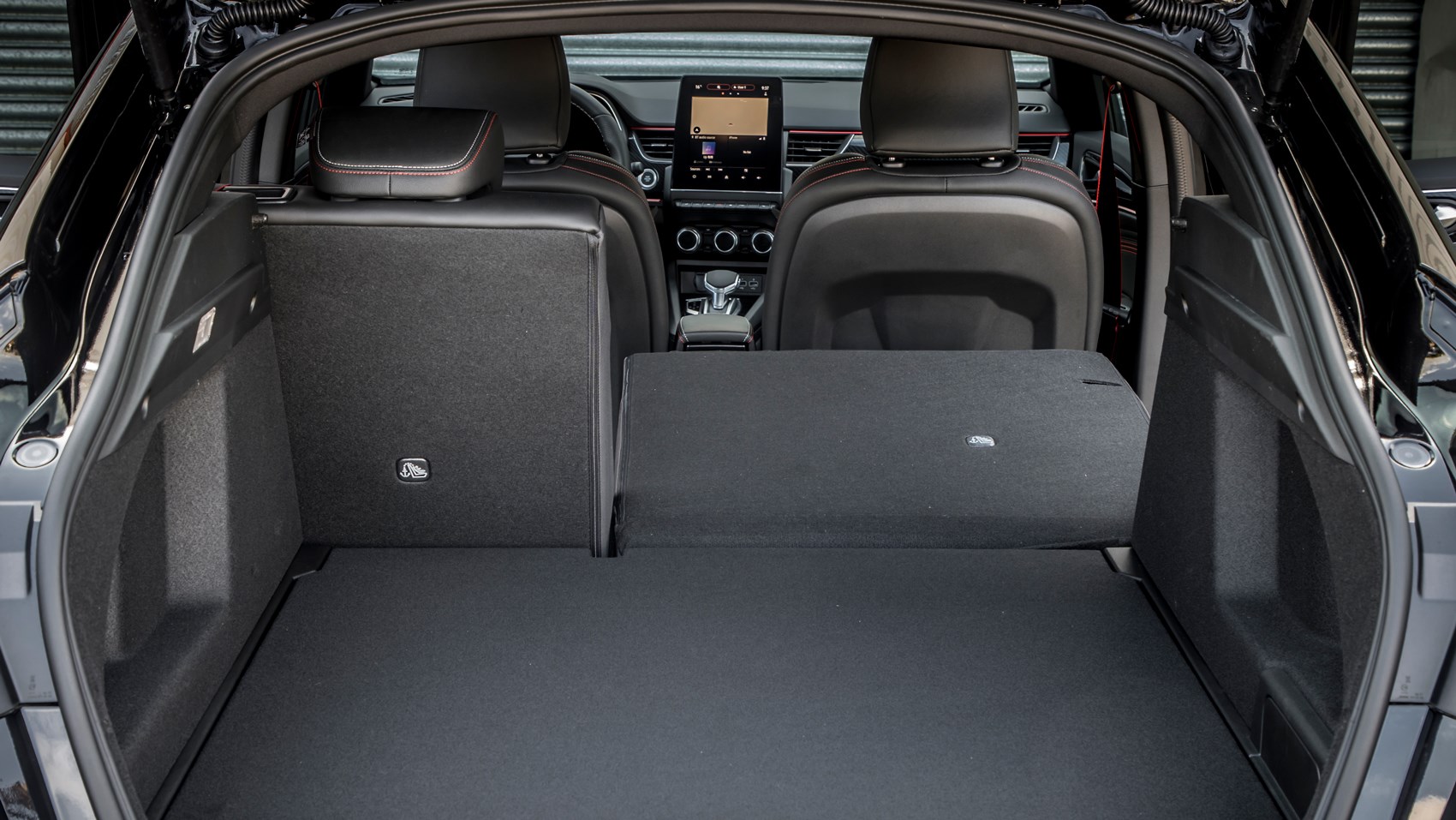
It’s a roomy car, although long-time Renault owners might be surprised to hear that this is currently the biggest Renault offered in the UK. The Koleos (from the bigger D-segment) has been dropped, while the Scenic and Grand Scenic are long gone, and we don’t get a hatch or estate bigger than the Megane. So the company that for a while was synonymous with seven-seat MPVs doesn’t import anything bigger than the C-segment and can’t help you if your family requires more than five seats.
What do you get for your money?
It looks and feels like a good value-for-money package. The performance isn’t going to get anyone excited, but if your priorities are style, practicality and a good smattering of convenience and comfort features, then you’re looking in the right place.
Apple CarPlay and Android Auto connectivity is standard. All models get Active Emergency Braking System, Traffic Sign Recognition, Lane Departure Warning, Lane Keep Assist and cruise control. Lighting is all-LED. Options include an opening sunroof, leather upholstery, black roof and adaptive cruise control.
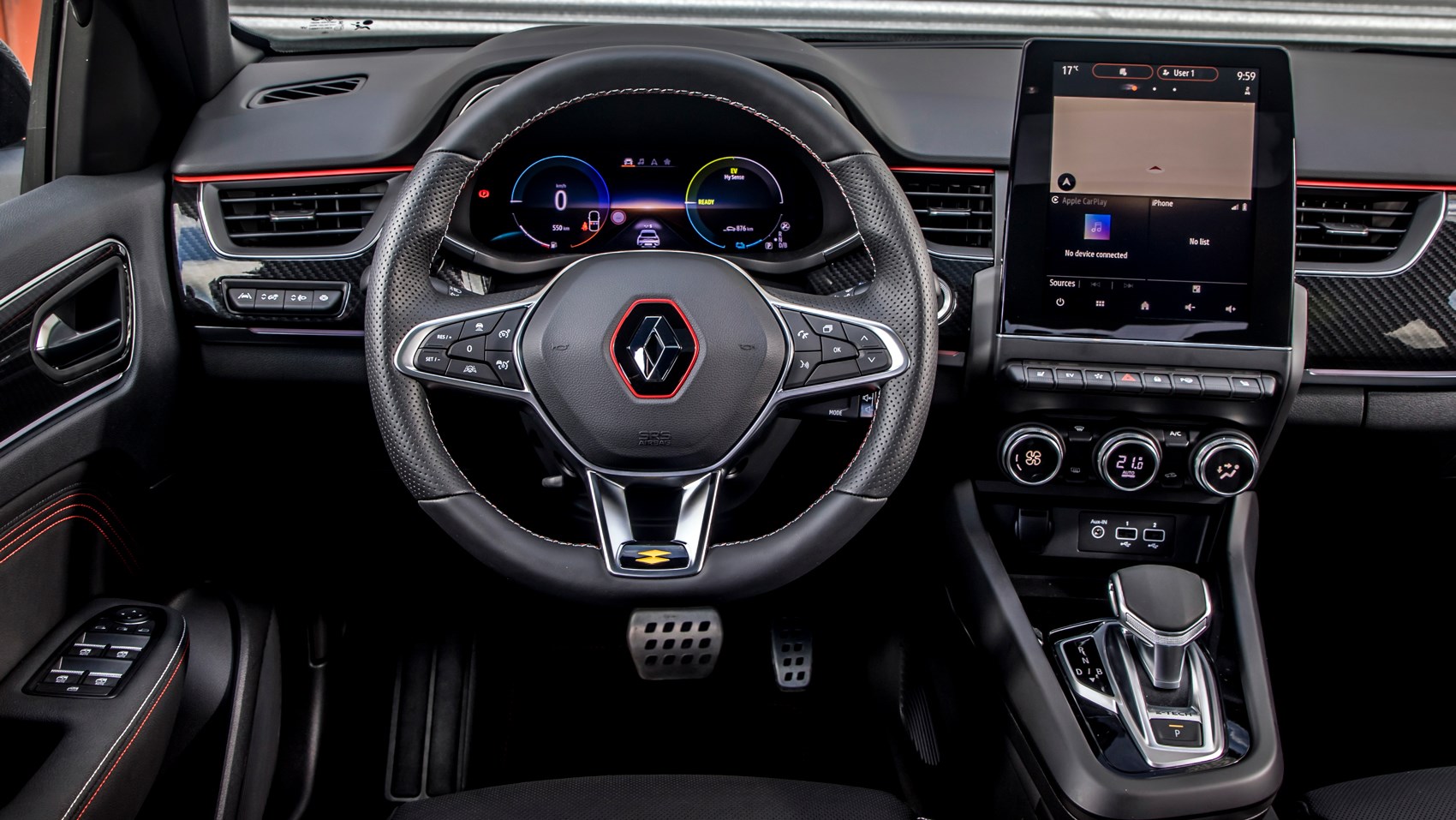
The middle-ranking S Edition has better infotainment than the entry-level Iconic, with the touchscreen up from 7.0 to 9.3 inches, bigger wheels – up from 17 to 18in – and various cosmetic tweaks. RS Line trim has different 18in wheels and more significant exterior changes, including a different front bumper and grille.
The cabin quality is intended to be premium. Certainly, Renault has massively upped its game in this area recently – the interiors of the current Clio and Captur are very modern, stylish and clever. Our test Arkana was a pre-production model, in not-quite UK spec, so it wouldn’t be fair to pass comment on the details, but there’s nothing radical or innovative going on with the cabin architecture.
There are a lot of physical switches – perhaps too many to eyes attuned to 2021 touchscreen-led thinking – but they’re logically grouped.
How does it drive?
It uses on a version of Renault’s CMF-B platform, as found in the Clio and Captur, and the lengthening of the wheelbase has not harmed the handling or ride quality. It corners willingly and soaks up most bumps unobtrusively, helped by comfortable seats.
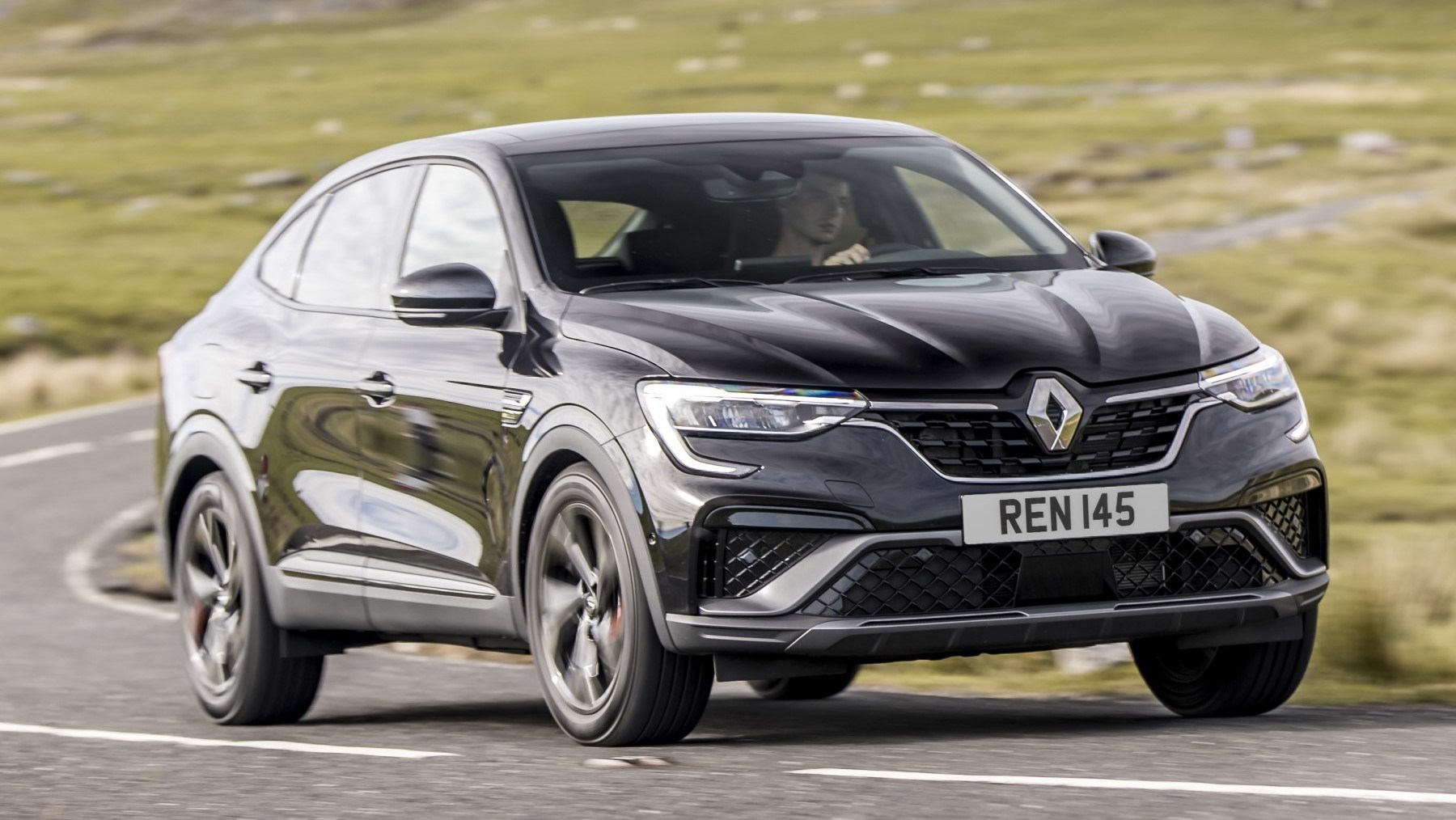
On all but entry-level models you get driving modes play with, but since Pure seems a little sluggish and Sport a bit sudden, you’re best off sticking with Hybrid, which provides a nicely responsive set-up (if distinctly unexciting) and deploys whichever permutation of electric, petrol and mixed power sources is best for any given situation.
Don’t be fooled by the RS Line trim, which is purely cosmetic. The on-paper figures are modest and correspond closely with the undramatic sensation of driving the Arkana.
Renault Arkana: verdict
Renault is committed to launching 14 E-Tech models by 2025, seven of them full electric, and (an overlapping) seven of them in the C-segment, like the Arkana. It’s aiming to be the greenest brand in Europe by 2030. Although many car manufacturers are stating that sort of ambition, Renault has a strong grounding in EV know-how thanks to its big-selling Zoe, and it’s serious about the ‘circular economy’ – which among many things includes finding ways to re-use and recycle EV batteries.
In light of all that, the Arkana might seem rather ordinary, even old-fashioned. Or, looked at more positively, it’s a proper car, adopting a style that’s a proven success, using tried-and-trusted technology. More radical cars, with a higher degree of electrification, are available from Renault and elsewhere, if that’s what you want. But for the here and now, this is a smart, practical, enjoyable and decent-value new car.
Read more Renault reviews here